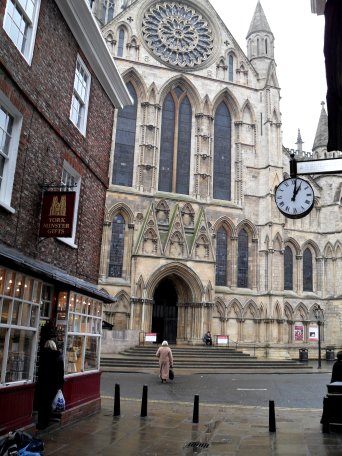Edwin of Northumbria was king from c 616 to 633, and he began the process of restoring the city, which became his capital. He converted to Christianity in 627. Construction of a wooden church for his baptism began, as descibed by the Venerable Bede:
'The king's baptism took place at York on Easter Day, the 12th of April, in the church of Saint Peter the Apostle, which the king had hastily built of timber during the time of his instruction and preparation for baptism; and in this city he established the see of his teacher and bishop Paulinus. Soon after his baptism, at Paulinus' suggestion, he gave orders to build on the same site a larger and more noble basilica of stone, which was to enclose the little oratory he had built before. The foundations were laid and the walls of a square church began to rise around this little oratory; but before they reached their appointed height, the cruel death of the king left the work to be completed by Oswald his successor.
It is thought that the church was built on or near the site of the Roman Pricipia, the main building of a Roman fort, and traces of this have been found under the foundations of the present Cathedral, known as York Minster. The principia could have had a well or water tank in the courtyard, which could have been used for the purpose of baptism. When Wilfrid arrived in 669 the church built by Oswald was in a poor state, so he set about rebuilding it. Eventually, it would become the magnificent cathedral we see today.

